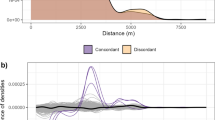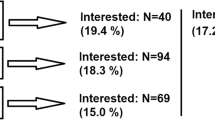Summary
-
1.
If environmental exposure of the general public to a considerable extent takes place through various routes of entry, quality standards for one source of exposure (e.g. air, food, water) will not protect public health adequately. This is the case for inorganic lead.
-
2.
Biologically available lead (lead in blood levels) and parameters of subclinical response may be expected to be feasible for indirect estimation of total environmental exposure; the feasibility has been studied.
-
3.
Lead in blood levels (PbB) in target groups of the general population portray the total environmental exposure to Pb for this group. Such groups should include at least 50 subjects, of same sex, similar socio-cultural class, with narrow age range, and preferably at high risk (exposure or susceptibility).
-
4.
Neither average levels nor one maximum level, but the distribution of levels in 98% of the target group should be taken as parameter of external exposure.
-
5.
The maximum acceptable individual level for adults is PbB=40 Μg Pb/100ml; because of increased uncertainty in regard to pregnancy and developing neonate this level should be lowered to PbB=35 Μg Pb/100 ml.
-
6.
Taking into account the maximum acceptable level of 35 Μg Pb/100 ml in 98% of subjects, and the normal variability of PbB levels as occurring in practice, the following distribution of PbB levels is proposed as biological quality guide: 98% ≦35 Μg Pb/100 ml, 90% ≦30 Μg Pb/100 ml, 50% ≦20 Μg Pb/100 ml. PbB levels in women should be corrected to male level on the basis of hematocrite.
-
7.
If the general distribution of PbB levels in a target group exceeds the proposed guide, total exposure in the environment studied is too high; action should be undertaken directed at the total environment. If the distribution only exceeds the guide at high PbB levels, a point source of external lead exposure is probable; action should be directed at this source.
-
8.
If in the environment total exposure to lead is too high, subsequent studies should determine contribution through various routes and sources: quality standards for air, food, water may have to be imposed; the same applies to emission standards.
-
9.
Due attention to errors of measurement of Pb in blood is necessary.
-
10.
It is not yet possible to propose a biological quality guide based upon Pb in urine or hair.
-
11.
It is not possible to propose a biological quality guide based upon ALAD-activity in erythrocytes, neither on ALA-excretion in urine.
-
12.
The proposed biological quality guide for lead in blood could enter governmental regulations, and so become a biological quality standard, if prevention of direct adverse effect on human health is aimed at.
Similar content being viewed by others
References
Albahary, C., Boudène, C.: Effets infra cliniques du plomb et leurs correlations avec l'imprégnation de l'environment. In: Environmental health aspects of lead, Proc. int. Symp., p. 667, Amsterdam (1972)
Amer. Acad. Pediatrics: Statement on lead based paint. Congr. report, Dec. 8, 1971, E 13175
Barltrop, D.: Environmental lead and its pediatric significance. Postgrad. med. J. 45, 129 (1969)
Barltrop, D.: Sources and significance of environmental lead for children. In: Environmental health aspects of lead, Proc. int. Symp., p. 675, Amsterdam (1972)
Berlin, A., del Castilho, P., Smeets, J.: European intercomparison programmes. In: Environmental health aspects of lead, Proc. int. Symp., p. 1033, Amsterdam (1972)
Blei und Umwelt: Komm. für Umweltgefahren des Bundesgesundheitsamtes, Arbeitsgruppe Blei. Berlin: Verein Wasser-Boden-Lufthygiene 1971
Bruin, A. de: Certain biological effects of lead upon the animal organism. Arch. environm. Hlth 23, 249 (1971)
Bulpitt, C. J.: Lead and hyperactivity. Lancet 1972 II, 1144
Burdé, B. de la, Choate McLin, S.: Does asymptomatic lead exposure in children have latent sequelae ? J. Pediat. 81, 1088 (1972)
Committee on biologic effects of atmospheric pollutants: Lead; airborne lead in perspective. Washington: National Academy Sciences 1972
Cooke, R. E.: The biological basis of pediatric practice, p. 414. New York: McGraw-Hill 1965
David, O., Clark, J., Voeller, K.: Lead and hyperactivity. Lancet 1972 II, 900
Editorial: Subclinical lead poisoning. Lancet 1973 I, 87
Environmental health aspects of lead: Proc. int. Symp. CEC-EPA, Amsterdam (1972), Luxemburg (1973)
Environmental Protection Agency: EPA's position on the health effects of airborne lead. Washington (1972)
Forni, A., Secchi, G. C.: Chromosome changes in preclinical and clinical lead poisoning and correlation with biochemical findings. In: Environmental health aspects of lead, Proc. int. Symp., p. 473, Amsterdam (1972)
Haas, T., Wieck, A. G., Schaller, K. H., Mache, K., Valentin, H.: Die usuelle Bleibelastung bei Neugeborenen und ihren Müttern. Zbl. Bakt. Hyg. I Abt. Orig. B, 155, 341 (1972)
Haeger-Aronsen, B.: Effect of lead on δ-ALAD activity in red blood cells. Arch. environm. Hlth 23, 440 (1971)
Hernberg, S.: Communication meeting of experts. Luxemburg: CEC 1973
Hernberg, S., Nikkanen, J.: Effect of lead on δ-ALAD. Pracov. Lék. 24, 77 (1972)
Hernberg, S., Nikkanen, J., Mellin, G., Lilius, H.: ALAD as a measure of lead exposure. Arch. environm. Hlth 21, 140 (1970)
Klevay, L. M.: Hair as a biopsy material. Arch. environm. Hlth 26, 169 (1973)
Lehnert, G.: Der Blutbleispiegel und seine Bedeutung für die Pathogenese und Prävention der beruflich bedingten Bleivergiftung. Stuttgart: Gentner 1968
Lehnert, G., Mastall, H., Szadkowski, D., Schaller, K. H.: Berufliche Bleibelastung durch Autoabgase in Großstadtstraßen. Dtsch. med. Wschr. 95, 1097 (1970)
Lehnert, G., Stadelmann, G., Schaller, K. H., Szadkowski, D.: Usuelle Bleibelastung durch Nahrungsmittel und Getränke. Arch. Hyg. Bakt. 5, 403 (1969)
Millar, J. A., Battistine, V., Cumming, R. L. C., Carswell, F., Goldberg, A.: Lead and ALAD levels in mentally retarded children and in lead poisoned suckling rats. Lancet 1970 II, 695
Moncrieff, A. A., Koumides, O. P., Clayton, B. E., Patrick, A. D., Renwick, A. G. C., Roberts, G. E.: Lead poisoning in children. Arch. Dis. Childh. 39, 1 (1964)
Nikkanen, J., Hernberg, S., Tola, S.: Modification of the δ-ALAD test and their significance for assessing different intensities of lead-exposure. Work-environment-health 9, 46 (1972)
Nordman, C. H., Hernberg, S., Nikkanen, J., Rijkänen, A.: Blood lead levels and erythrocyte δ-ALAD activity in people living around a secondary lead smelter. Work-environment-health 10, 19 (1973)
Pietrowsky, J. K.: Kinetic behaviour of lead. Congr. chem. pollution and human ecology, Prague (1970)
Schaller, K. H., Mache, K., Haas, T., Mache, W., Valentin, H.: deέthoden zur Bestimmung der δ-ALA-dehydratase-Aktivität. Europ. Gemeinschaft Dok 3107/71d (1971)
Schwanitz, G., Lehnert, G., Gebhart, E.: Chromosomenschäden bei beruflicher Bleibelastung. Dtsch. med. Wschr. 95, 1635 (1970)
Schwarz, K.: Scientist disputes lead health danger claims for auto's. Oil daily, April 25, 1973, p. 1
Secchi, G. C., Alessio, L., Cambiaghi, G.: Richerche sull'attivita ALAD eritrocitavia di soggesti non esposti a contatto professionale con piombo. Med. d. Lavoro 62, 435 (1971)
Seppalainen, A. M., Hernberg, S.: Sensitive technique for detecting subclinical lead neuropathy. Brit. J. industr. Med. 29, 443 (1972)
Stave, U.: Physiology of the perinatal period, Vol. 1, p. 210. New York: Appleton 1970
Stuik, E. J., de Bruin, A., Zielhuis, R. L.: Human volunteer study. Not yet published. Coronel Laboratory, Univ. of Amsterdam (1973)
Teisinger, J., Prerovska, I., Sedivec, V.: Versuch um die Bestimmung vom Bleidepot im Körper bei experimenteller Bleivergiftung. 15th Int. Congr. occup. Hlth, Vienna, 1966, Vol. III, p. 79
Tepper, L. B., Levin, L. S.: A survey of air and population lead levels in selected American communities. Univ. Cincinnati, Dept. Environm. Hlth (1972)
Thompson, J. A.: Balance between intake and output of lead in normal individuals. Brit. J. industr. Med. 28, 189 (1971)
Vigliani, E. C., Zurlo, M.: Lead in blood and lead in urine values of adults not exposed to lead, living in Milan. Report Work Conf. inorg. lead, Amsterdam (1968)
Zielhuis, R. L.: Lead absorption and public health: an appraisal of hazards. In: Environmental health aspects of lead. Comm. Europ. Comm., p. 649 (1972a)
Zielhuis, R. L.: Industrial toxicology and public health. Pracov. Lék. 24, 112 (1972b)
Zielhuis, R. L.: Health and environmental quality standards. Proc. 3rd Int. Clean Air Congress, Düsseldorf (1973), A 74
Zielhuis, R. L., Verberk, M. M.: Validity of biological tests in epidemiological toxicology. Int. Arch. Arbeitsmed. (in press, 1974)
Author information
Authors and Affiliations
Additional information
Part of this study was supported by a grant from Direction Health Protection, Europ. Econ. Comm., Luxembourg.
Rights and permissions
About this article
Cite this article
Zielhuis, R.L. Biological quality guide for inorganic lead. Int. Arch. Arbeitsmed 32, 103–127 (1974). https://doi.org/10.1007/BF00539100
Received:
Accepted:
Issue Date:
DOI: https://doi.org/10.1007/BF00539100




